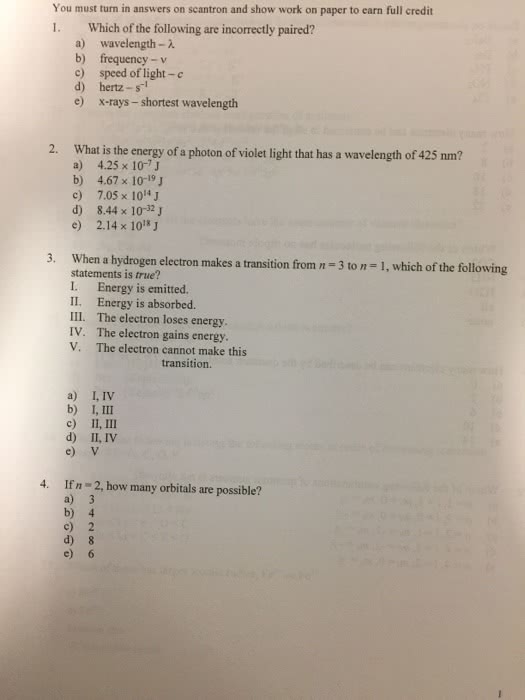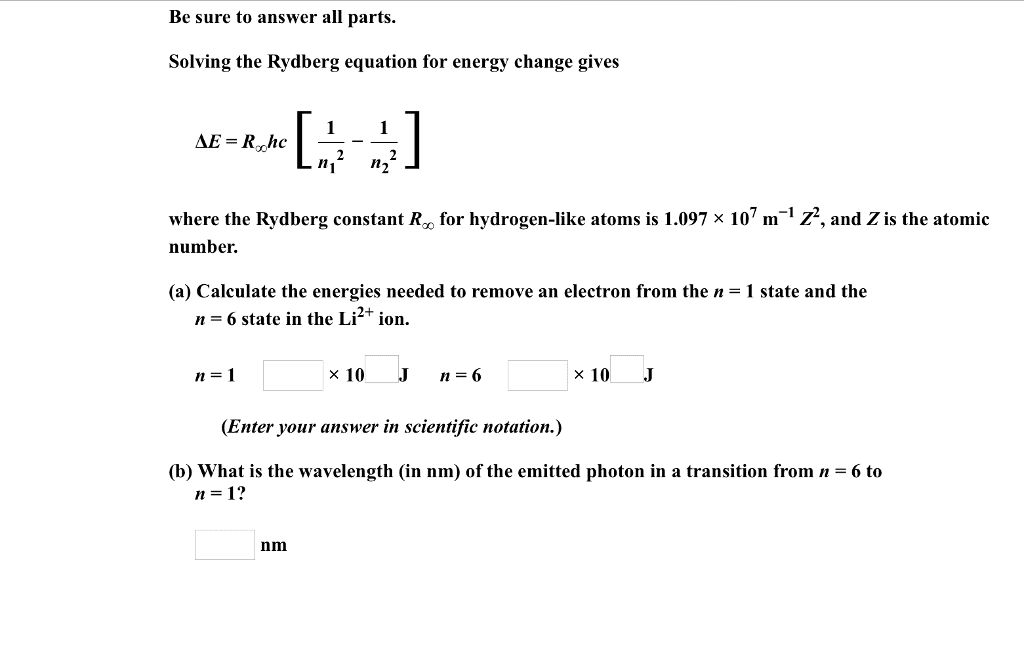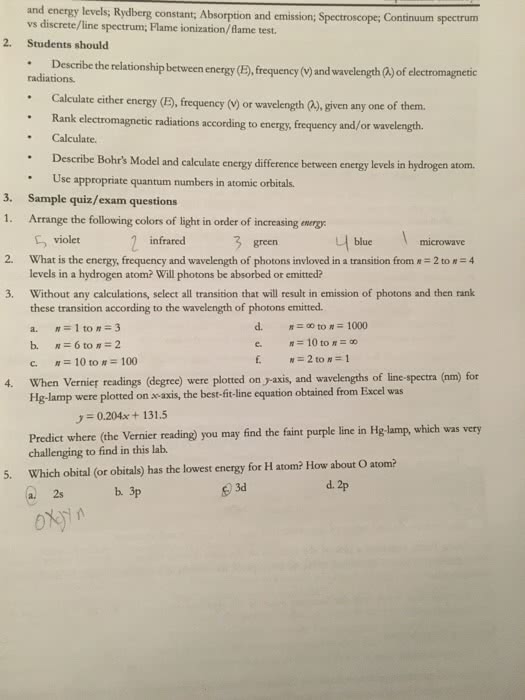CHEM-6 Midterm: Chem 6 Dartmouth Spring Exam3S
Document Summary
Chem 6 sample exam 3 (final) brief answers. 2 1/ni: because e = hc/ , shortest wavelength means biggest energy. This must correspond to a transition from n = infinity to the unknown quantum number n. the energy of this transition is given by. Plug in z = 1 for hydrogen, nf = n, ni = infinity and solve for n. Now we can find the wavelength for line b. The far-right line (largest wavelength) must be the smallest energy transition, from n = 7 to n = 6. So, line b must be due to the transition from n = 8 to n = 6. E = 2. 18x10 18j (1/62 1/82) = 2. 65x10 20j. I ei = hc/ or = hc/ i ei = [(6. 626x10 34j)(3x108m/s)]/ 2. 65x10 20j. = 7. 5x10 6 m x 109nm/m = 7500 nm: rate = k2[a*] Steady-state: d/dt[a*] = k1[a]2 k 1[a*][a] k2[a*] = 0.



